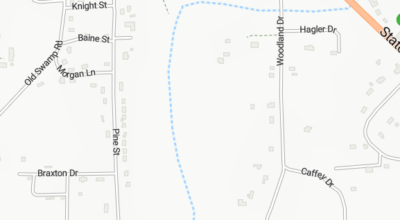Black Bear Solar Project to provide 20 years’ worth of clean, reliable, cost-effective energy
Published 4:02 pm Tuesday, November 29, 2022
|
Getting your Trinity Audio player ready...
|
Beginning in January, Alabamians in 11 member cities will experience the benefits of a renewable energy project, The Black Bear Solar Project, one of the largest of its kind in the state.
The initiative, a partnership between the Alabama Municipal Electric Authority (AMEA) and Lightsource BP, is scheduled to go online in January and will feature 280,000 solar panels across 800 acres on Butler Mill Road in Montgomery County.
The project will contribute energy to the power grids for member cities like Luverne, powering 20,000 homes each year with clean, reliable, cost-effective energy.
“We contracted for 20 years, 100 megawatts from Lightsource BP,” said AMEA President and CEO Fred Clark. “With this new plant, we will be receiving energy from the Black Bear Solar Project on January 1. It will be approximately 7% of our energy needs at a fixed price. So, it will help lower the cost of our current other resources.”
According to Clark, the electric utility industry is moving from coal to natural gas as the primary fuel for generating electricity. The war in Ukraine and volatility in Europe have contributed to a worldwide increase in natural gas prices, and projects like this one provide more economical generation resources.
A decade ago, solar energy was not economical on a large scale, Clark noted, but manufacturing has improved, and now large-scale solar provides a fixed energy price for consumers.
“If I had this resource in place throughout the year 2022, we would have saved $12 million last year in fuel costs,” Clark said. “That would have been offsetting the very high costs that we paid this past summer for natural gas and other resources. We have a fixed cost resource interconnected with the Southern Company transmission system and delivered to substations of our member cities. Having that will stabilize and lower our costs in 2023 and beyond.”
Solar energy does require batteries for dispatching electricity, Clark said, and current battery technology is not economical. Clark is hopeful that as technology advances, solar energy will provide even more cost saving in the next 10 or 20 years.
The project is AMEA’s first large-scale facility and Clark said the utility has plans for another one. As soon as spring, AMEA will request proposals for the next project to implement by January 2026.
“I applaud AMEA and its staff for the planning and execution of such a large project,” said Luverne City Councilman and Emergency Management Agency Director Elliot Jones. “The Black Bear Solar Project will benefit the City of Luverne for many years with its reduction of fuel-based electric dependency, which in turn will assist the city in providing the lowest electric rates in our area to our citizens, businesses, and industries.”









